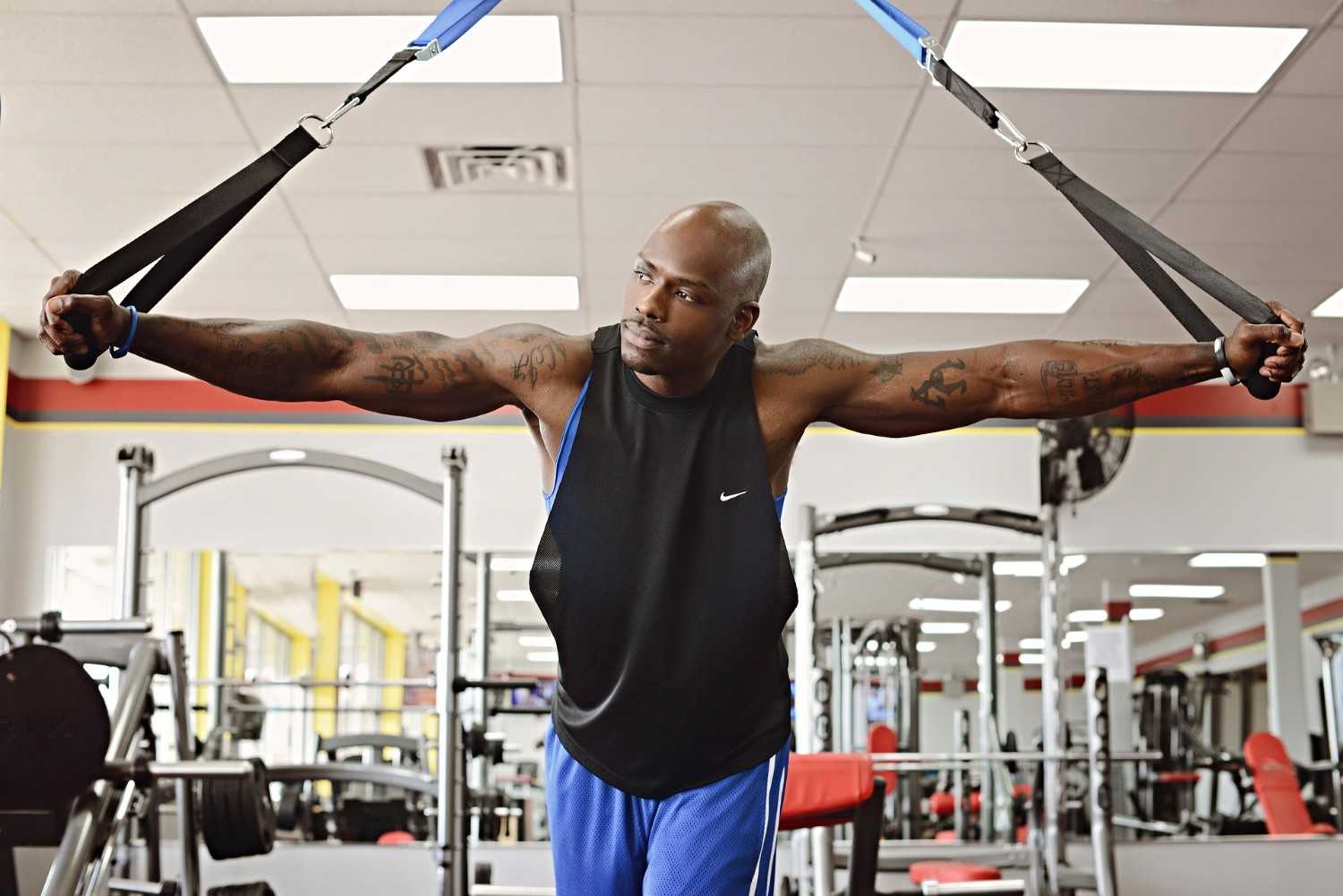Firefighting is one of the most physically and mentally demanding professions in the world. From carrying heavy equipment to climbing ladders and rescuing victims, firefighters face extreme challenges every day. To meet these demands, workouts for firefighters must be tailored to build strength, endurance, mobility, and mental toughness. Unlike generic fitness routines, these workouts focus on functional training that mirrors real-life emergency situations, ensuring firefighters can perform effectively when lives are on the line.

Why Workouts for Firefighters Are Different
Firefighters aren’t just gym-goers looking to bulk up or improve their physique — their workouts serve a purpose beyond aesthetics. The job requires sudden bursts of power, long periods of stamina, and the ability to function under extreme heat and stress. That’s why workouts for firefighters often combine strength training, cardiovascular conditioning, agility drills, and flexibility exercises.
Physical Demands of Firefighting
-
Heavy lifting: Carrying hoses, axes, and gear weighing up to 75 lbs.
-
Climbing & crawling: Navigating through tight spaces and up ladders.
-
Endurance under stress: Working in high temperatures with limited oxygen.
-
Rescue operations: Pulling or carrying victims to safety.
These unique challenges mean that firefighter training must be specific, intentional, and consistent.
Key Components of Workouts for Firefighters
A truly effective firefighter fitness program is more than just lifting weights or running laps. It’s about building the physical qualities that firefighters need in real emergency situations — the ability to lift heavy loads, move quickly in full gear, and work for extended periods without exhaustion. A balanced approach focuses on four major components: strength, cardiovascular endurance, mobility, and functional movements. Each plays a critical role in helping firefighters perform their duties safely and effectively.
1. Strength Training
Strength is the foundation of all workouts for firefighters, as the job often demands lifting, pulling, and carrying heavy objects — sometimes in awkward positions. Whether it’s breaking down a door, hauling hoses up several flights of stairs, or carrying a victim to safety, strong muscles and joints make these tasks possible. Strength training also reduces the risk of injury by building stability in key areas like the back, core, and shoulders.
Exercises to include:
-
Deadlifts: Build powerful hamstrings, glutes, and lower back muscles, improving your ability to lift heavy objects from the ground without strain.
-
Squats: Strengthen your legs for climbing, kneeling, and moving while under load. Squats also improve hip mobility, which is critical for maneuvering in tight spaces.
-
Overhead Press: Develop shoulder and upper back strength, essential for lifting gear overhead, raising ladders, and using firefighting tools.
-
Farmer’s Carry: Mimic the act of carrying hoses, tools, or victims by walking with heavy weights in each hand over a set distance. This also improves grip strength, which is vital for holding onto equipment.
2. Cardiovascular Endurance
Firefighting isn’t just about short bursts of effort — emergencies can last for hours, requiring continuous physical activity while breathing through SCBA (Self-Contained Breathing Apparatus). Strong cardiovascular health ensures firefighters can work in high-pressure situations without getting winded too quickly.
Cardio options:
-
Running or Stair Climbing with a Weighted Vest: Builds lower-body strength and stamina while simulating the demands of moving in heavy gear.
-
Rowing Machine Sprints: A low-impact, full-body cardio workout that boosts both endurance and explosive power.
-
High-Intensity Interval Training (HIIT): Alternating periods of maximum effort with short rests improves heart health, lung capacity, and recovery speed — all crucial for firefighting.
3. Mobility and Flexibility
In emergencies, firefighters often need to crawl through confined spaces, crouch for long periods, or reach over obstacles — all while carrying extra weight. Good mobility keeps joints healthy, prevents strains, and allows the body to move more efficiently in tight or awkward positions. Flexibility complements mobility by improving muscle elasticity and reducing the likelihood of injury.
Mobility drills:
-
Dynamic Stretching Before Workouts: Prepares the muscles and joints for movement, reducing the risk of strains during heavy lifting or quick sprints.
-
Yoga Sessions: Enhance flexibility, balance, and core strength while also promoting mental focus and relaxation — important for stress management on the job.
-
Foam Rolling: Helps release muscle tension, improve circulation, and speed up recovery after intense training or long shifts.
4. Functional Firefighter Drills
This is where the workouts for firefighters truly mimic real-life job tasks. Functional training prepares the body to perform movements exactly as they occur during emergencies. By practicing these movements in training, firefighters improve both strength and muscle memory, making them more efficient and confident during actual calls.
Examples include:
-
Hose Drags: Build upper body, core, and grip strength while simulating pulling heavy hoses over long distances.
-
Sledgehammer Strikes: Develop explosive power and coordination, much like breaking through doors or walls in rescue situations.
-
Victim Carries Using Weighted Dummies: Train for one of the most critical tasks — carrying a person to safety under challenging conditions.
-
Ladder Raises: Strengthen shoulders, arms, and back muscles while improving balance and coordination when setting up ladders.
Sample Workouts for Firefighters
Below is a structured workout plan that combines all essential components — strength, endurance, agility, and functional skills. These routines are designed to prepare firefighters for the real physical demands of their job, from carrying heavy equipment to navigating challenging environments under pressure. Each workout can be modified based on fitness level, available equipment, and specific firefighting requirements.
Full-Body Strength Workout for Firefighters
A strong body is the foundation for every firefighter task. This full-body strength workout targets major muscle groups to improve lifting power, core stability, and overall resilience. It’s ideal for building the kind of functional strength needed to handle hoses, ladders, and victims in emergency situations.
Warm-Up (10 Minutes)
Warming up properly helps prevent injuries and prepares your body for heavy lifting.
-
Jump Rope – 2 minutes: Boosts heart rate and improves coordination.
-
Arm Circles & Shoulder Mobility Drills – 3 minutes: Loosens the shoulders for overhead work and carrying gear.
-
Dynamic Lunges – 2 minutes: Activates the lower body while improving hip mobility.
-
Bodyweight Squats – 3 minutes: Engages leg muscles and primes the body for heavier squats.
Main Strength Circuit (3 Rounds)
Perform each exercise back-to-back, resting for 60–90 seconds between rounds.
-
Deadlifts – 8 reps: Builds strength in the hamstrings, glutes, and back for lifting heavy loads.
-
Squats – 12 reps: Strengthens legs and core for climbing, crouching, and carrying.
-
Overhead Press – 10 reps: Improves shoulder stability and pushing power for lifting equipment overhead.
-
Pull-Ups – Max reps: Develops upper body pulling strength for climbing ladders or pulling victims.
-
Farmer’s Carry – 40 meters: Mimics carrying hoses or tools while improving grip and core strength.
Cool-Down
Cooling down helps muscles recover and reduces soreness.
-
Foam Rolling – 5 minutes: Loosens tight muscles and improves circulation.
-
Static Stretching: Focus on hamstrings, shoulders, and lower back to maintain flexibility.
Cardiovascular & Agility Workout for Firefighters
Firefighters often work in high-pressure, time-sensitive situations where endurance and agility are critical. This workout builds cardiovascular capacity for long operations and sharpens footwork for moving quickly and safely in complex environments.
Cardio & Sprint Training
-
Stair Climbs with a Weighted Vest – 3 minutes: Simulates climbing buildings with full gear while improving leg strength and lung capacity.
-
Rowing Machine – 500 meters at High Speed: Low-impact but intense cardio that engages the entire body.
-
Sprint Intervals – 8 × 50 meters: Sprint for 50 meters, rest for 30 seconds, then repeat. Trains explosive power and recovery speed.
Agility Drills
-
Ladder Footwork Drills – 3 minutes: Improves coordination, balance, and quick directional changes.
-
Cone Drills – Zigzag Sprints for 5 Rounds: Builds agility for navigating around debris or tight corners during rescues.
Functional Firefighter Circuit
This functional training circuit replicates real firefighting tasks, helping you develop both the physical and mental readiness for emergencies.
Real-World Movement Simulation
-
Hose Drag – 50 feet: Strengthens upper body, grip, and core while simulating pulling heavy hoses into position.
-
Sledgehammer Swings – 15 reps: Builds explosive power for breaking through doors, walls, or other obstacles.
-
Weighted Dummy Carry – 40 meters: Simulates carrying an unconscious victim to safety, improving strength and endurance.
-
Ladder Raise – 5 reps: Strengthens arms, shoulders, and back while practicing the motion of setting up ladders during a call.
Repeat for 4 rounds with minimal rest to mimic the physical demands and limited recovery time of real emergencies.
Benefits of Workouts for Firefighters
1. Enhanced Job Performance
Regular workouts for firefighters directly translate to better performance on the job. A stronger, fitter body allows firefighters to move quickly under heavy loads, operate tools more effectively, and sustain high energy during long emergency calls. When fatigue sets in slower, you’re able to think clearly, react faster, and work more efficiently — all of which can be life-saving in critical situations.
2. Injury Prevention
Firefighting often requires awkward movements, heavy lifting, and quick changes in direction. A well-rounded training program builds strength, flexibility, and joint stability, greatly reducing the risk of strains, sprains, or back injuries. The more balanced and mobile your body, the less likely you are to get hurt while performing demanding tasks on duty.
3. Improved Mental Resilience
Tough, physically demanding training doesn’t just strengthen muscles — it also builds mental toughness. Pushing through challenging workouts for firefighters helps prepare the mind for the stress, uncertainty, and intensity of emergency situations. That mental resilience can be the difference between panicking and staying calm when every second counts.
4. Longer Career Longevity
A career in firefighting is physically demanding from start to finish. Consistent workouts keep the body strong, joints healthy, and endurance high, allowing firefighters to perform at their best well into the later stages of their careers. Staying fit also supports faster recovery after intense calls or training days, making it easier to handle the physical grind year after year.
Nutrition Tips for Firefighters’ Training
Training hard is only half the equation — the other half is fueling your body properly. Nutrition plays a key role in powering workouts for firefighters and aiding recovery afterward.
-
Eat for Energy: Build meals around lean proteins like chicken, turkey, fish, and eggs; complex carbs such as brown rice, quinoa, and whole grains; and healthy fats from sources like nuts, seeds, and avocados. This combination keeps energy levels stable during long shifts and demanding workouts.
-
Stay Hydrated: Dehydration can sap strength, slow reaction time, and increase fatigue. Drink water consistently throughout the day and add electrolytes if you’re sweating heavily during training or while on calls.
-
Recovery Meals: After each workout, aim for a mix of protein and carbohydrates to repair muscles and replenish glycogen stores. Examples include grilled chicken with sweet potatoes, or a protein shake with a banana.
Safety Tips When Performing Workouts for Firefighters
While the goal is to get stronger, faster, and more capable, training must always be done with safety in mind.
-
Always Warm Up Before Intense Training: Start each session with 8–10 minutes of light cardio and mobility drills to prepare your muscles and joints for heavier work.
-
Use Proper Lifting Form: Lifting with poor form — especially under heavy loads — can cause serious injuries. Focus on technique first, and gradually increase weight as your form stays consistent.
-
Incorporate Rest Days for Muscle Recovery: Your body needs downtime to grow stronger. Schedule at least one to two rest or active recovery days each week.
-
Train Progressively: Don’t jump into the most intense version of a workout right away. Gradually increase your training volume and intensity to avoid overuse injuries and burnout.
Conclusion
Workouts for firefighters are more than just exercise — they are a form of preparation for life-or-death situations. A firefighter’s body must be strong, fast, and resilient, capable of handling extreme conditions with precision and endurance. By focusing on strength, cardio, mobility, and functional drills, firefighters can ensure they are always ready to answer the call. In this profession, fitness isn’t optional — it’s a vital part of saving lives.
FAQs
Why are specialized workouts for firefighters necessary?
Firefighting demands more than just general fitness. You need strength to carry heavy equipment, endurance to work for long periods, agility to move through obstacles, and mental toughness to stay calm under pressure. Workouts for firefighters are designed to mimic these job-specific challenges, making them more effective than standard gym routines.
How many days per week should a firefighter train?
Most firefighters benefit from training 3–5 days per week. This allows time to build strength, improve endurance, and maintain mobility while giving your body enough rest for recovery. The key is to alternate between heavy strength days, high-intensity conditioning, and active recovery or mobility work.
Do workouts for firefighters require heavy weights?
Not always. While lifting weights builds the raw strength needed for tasks like carrying hoses or victims, bodyweight training, sandbag carries, and resistance band work can also be highly effective. The best programs combine weighted and functional bodyweight exercises to prepare you for real-life scenarios.
What type of cardio is best for Workouts for Firefighters?
Firefighters should include both steady-state cardio (like running or cycling) for endurance and high-intensity interval training (HIIT) for quick bursts of energy. Stair climbs, rowing, sled pushes, and battle ropes are excellent cardio exercises that simulate firefighting demands while improving cardiovascular health.
Should firefighters train while wearing gear?
Occasionally, yes. Training in turnout gear or a weighted vest can help your body adapt to the heat, weight, and movement restrictions you’ll experience on the job. However, this should be done sparingly and safely, as excessive gear training can lead to overheating or joint strain.


